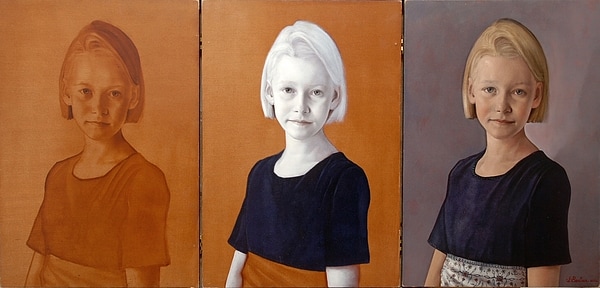Top 20 Underpainting Tips for Oil Painting
Underpainting is a basic technique in oil painting that can make your artwork look deeper, richer, and more vibrant. Here are Art4Heart’s 20 tips and ideas on underpainting techniques for oil paint artists, including some lesser-known ones:
1. Choose the right colour: Pick a colour for the underpainting that matches the final colours of your painting.
2. Use thinned paint: Mix your oil paint with turpentine or a painting medium to create a thin, see-through layer for the underpainting.
3. Plan your composition: Draw your design before starting the underpainting to place the main elements and their values correctly.
4. Consider tonal values: Create a strong contrast between light and dark areas in the underpainting to set a solid base for the next layers.
5. Experiment with different techniques: Try different underpainting methods like washes, scumbling, or glazing to get different effects.
6. Use complementary colours: Use colours that are opposite each other on the colour wheel in the underpainting to make the final painting more vibrant.
7. Incorporate texture: Add texture in the underpainting by using techniques like thick paint (impasto) or scratching (sgraffito) to make the surface more interesting.
8. Let it dry completely: Let each layer of the underpainting dry thoroughly before adding more layers to avoid mixing and muddy colours.
9. Use a limited palette: Use only a few colours in your underpainting to keep the painting harmonious and not too overwhelming.
10. Work from general to specific: Start with broad, loose strokes in the underpainting and add details as you go along.
11. Experiment with temperature: Play with warm and cool versions of your chosen colour in the underpainting to add depth and interest.
12. Create an underpainting ground: Apply a coloured base to your canvas before starting the underpainting to create a unified colour throughout the painting.
13. Use a monochromatic underpainting: Try an underpainting in just one color to focus on light and dark values before adding full colour.
14. Incorporate underpainting for colour harmony: Use colours that work well together in the underpainting to tie the whole painting together.
15. Utilize underpainting for luminosity: Create a see-through underpainting to let light shine through the layers, making the final painting glow.
16. Employ underpainting for texture: Build up layers of texture in the underpainting to create interesting effects that will show through the final layers.
17. Consider using a toned ground: Apply a coloured base to your canvas before starting the underpainting to add a subtle warm or cool tone to the painting.
18. Experiment with different tools: Try using unusual tools like sponges, palette knives, or even your fingers to apply the underpainting and create unique textures.
19. Blend with a soft brush: Use a soft brush to blend and smooth edges in the underpainting, creating gentle transitions between colours and shapes.
20. Don't be afraid to scrape back: Scrape back layers of the underpainting to reveal underlying colours, creating interesting textures and adding depth to the painting.
Unlock the full potential of your oil paintings with these underpainting techniques from Art4Heart. Happy painting!






































